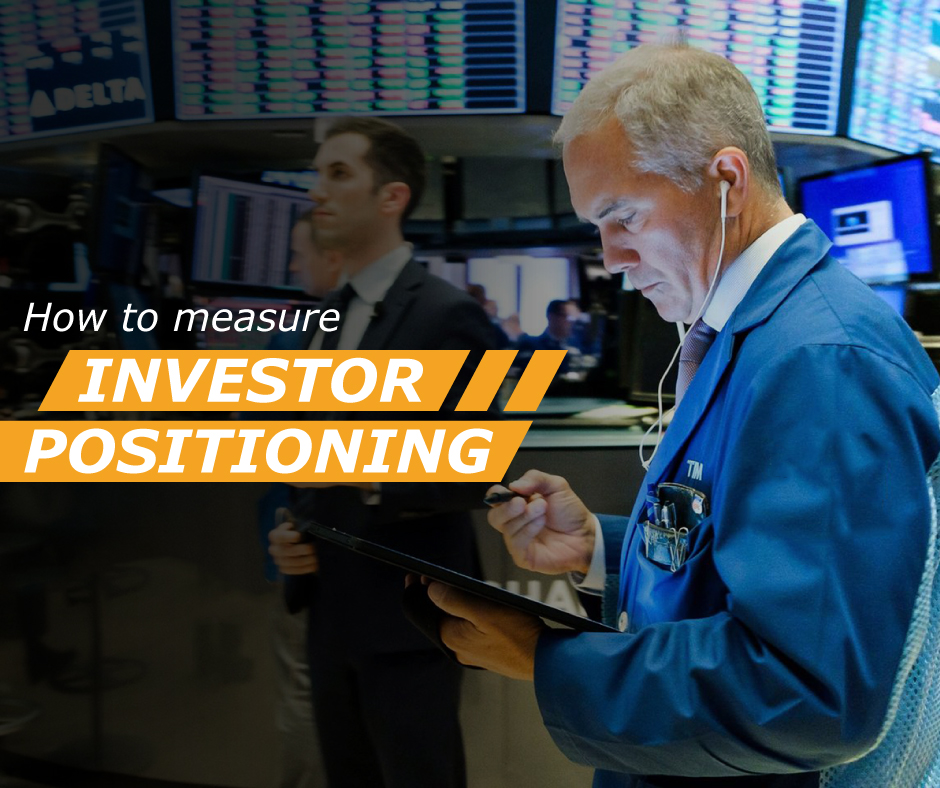The famous speculator of the early 20th century, Bernard Baruch, used to say “Something that everyone knows isn’t worth anything.” The reason why is because markets are discounting mechanisms. Consensus beliefs are instantly embedded into the prices of assets.
This is why the market often moves in surprising and counterintuitive ways. It rises when everybody is bearish and falls when everybody is bullish. The consensus is already in the price so everyone who would have bought/sold already has and so any new marginal pieces of information are likely to move the market in the other direction.
This is why in order to play markets successfully, you have to be a contrarian. You have to develop a sense for the broader sentiment. Because sentiment tells you how the market is positioned. And it’s the aggregate positioning that moves prices.
In this piece, we’re going to layout three critical tools you can use to measure investor positioning. Using these tools you’ll be able to approach the market from the position of an effective contrarian. And this will help ensure your long-term financial success.
These three tools are:
- The Commitment of Traders Report (COT)
- CBOE Equity Put/Call
- NAAIM Exposure Index
All three of these indicators are freely available to the public. We’ll go through each one, beginning with the first.
The Commitment of Traders Report (CoT)
The Commodity Futures Trading Commission (CFTC) publishes the Commitments of Traders (COT) report weekly. COT reports are based on positioning data in the futures market. They show the aggregate buying and selling flows of different players. They do this for all futures markets, from gains to WTI oil, to S&P futures, etc… We’ll focus on the financial futures which include the S&P 500 and Nasdaq futures markets. These players include:
-
- Dealer/Intermediary
-
- Asset Manager/Institutional
-
- Leveraged Funds
-
- Other Reportable
Charting services often chart the Dealer/Intermediary positioning as “Commercials” and all the others in aggregated into a bucket called “non-commercials, aka. Speculators”. When looking at positioning data in the stock market (the S&P 500 and Nasdaq), we want to focus on what the non-commercials/speculators are doing.
Here’s a chart showing “speculators” (red) and “commercials” (green) in the S&P 500 Index.
We want to view this data from a contrarian perspective. So when speculators become very bullish, meaning they’re aggressively buying S&P 500 futures, we want to become more cautious and vice-versa.
You can find COT data available for free on most modern charting services.
CBOE Equity Put/Call Ratio
One of the most effective sentiment indicators is the CBOE Equity Index Put/Call ratio. CBOE stands for the Chicago Board of Options Exchange. This indicator shows the actual buying and selling of index call options within the market, and thus is a reflection of broader market sentiment. Investors buy puts when they’re worried (bearish). They buy calls when they’re greedy (bullish). The ratio between these two gives you a glimpse into market psychology.
Now, this indicator is noise as it jumps up and down from day to day. So it’s best to smooth it out with the moving average (we prefer the 10-day average). You can find this data on any basic free charting software. Here is an example of what the CBOE Put/Call chart smoothed with a moving average look like.
A high reading means investors are buying lots of puts relative to calls, and are bearish. Vice-versa when the indicator gives a low reading.
NAAIM Exposure Index
The NAAIM Exposure Index represents the average exposure to US equities reported by members of the National Association of Active Investment Managers (NAAIM).
NAAIM updates the data weekly and you can find the latest numbers for free on their website here.
A high number shows that investors are incredibly bullish and vice-versa for a low number. Similar to the above two indicators of investor positioning, you want to view this data through a contrarian’s lens. So when the NAAIM Exposure Index is showing an extremely high reading, you want to be cautious and begin paring back your risk. And you want to be buying when the indicator shows that investors have very low exposure to stocks.
The chart below shows how this indicator often marks major bottoms and tops.
Now, none of these indicators of investor positioning are perfect. No such indicator exists. But used in conjunction with one another, you can develop a good sense of how the broader market is positioned. This will allow you to better time your entries and exits. And help you on your path to financial success.
It’s critically important to invest as an effective contrarian (buy when others are selling and sell when others are buying). Knowing how to read market sentiment and investor positioning is an important step in doing just that.












